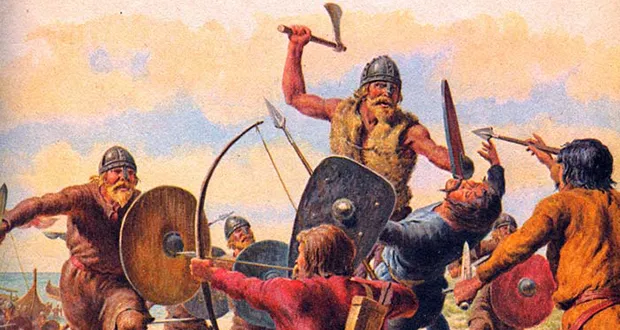Sigurd Eysteinsson or better known as Sigurd the Mighty, was the leader in a Viking conquest in Northern Scotland and was popularly known as the second Earl of Orkney. But did you know the story about his unusual death?
Sigurd Eysteinsson had his enemies’ heads attached to his winning men’s saddles as a trophy. On his way home, Máel Brigte’s tooth scratched his leg. The leg got infected and resulted in Eysteinsson’s untimely death
Sigurd Eysteinsson and His Unusual Death
The Viking invasion of northern Scotland under the command of Eysteinsson gained him the moniker Sigurd the Mighty. Soon after receiving the title of Earl of Orkney from his brother in 872 CE, he began to conquer the greater part of Europe.
Located at the northernmost point of the British mainland, this little island chain has a chilly, rainy environment ideal for a farming-based economy. It was the perfect place to set up an invasion. His fighting prowess became the stuff of legends, and the Norse people frequently mention his campaign in their oral histories.
However, he wasn’t always a brave warrior. Eysteinsson’s conflict with Máel Brigte the Bucktoothed, a local leader in Scotland, is described in The Record of the Earls of Orkney, a work of early thirteenth-century literature that is equal parts history of the region and a mythological tale of the Vikings.
They decided to engage in a fictitious duel. The rules were straightforward: each man would bring his 40 finest men, meet at a specific location at a predetermined time, and engage in a deathmatch. The winner would unquestionably take complete control of the losing party’s assets. Brigte kept his end of the bargain, but Eysteinsson showed up with twice as many soldiers. Along with his soldiers, the Scotsman was killed.
Brigte’s head was severed and fastened to Eysteinsson’s saddle. The buck teeth that gave Brigte his name made him easily identifiable to other lords who would dispute Eysteinsson’s claims to Scottish territory, making them fearful of joining Eysteinsson’s accouterments.
However, Eysteinsson was the one who ought to have been wary of Brigte’s buck teeth. The dead man’s teeth scratched Eysteinsson ‘s leg as he rode, and one of his wounds became infected by the disease from the decomposing head. There are few specifics about the type of infection. Unfortunately, it proved fatal, and it appears that the combat was indeed a stalemate. (Source: Diabolique Magazine)
Vikings Do Not Call Themselves Vikings
Since the term Viking doesn’t refer to any particular group or tribe of people, Vikings didn’t refer to themselves by that name. Scandinavian nations as we know them today did not exist during the Viking Age, and people settled primarily in dispersed clans and tribes across the region. In Old Norse, the phrase go on a Viking meant to engage in piracy or a freebooting journey, and not to describe an individual. (Source: Britannica)
